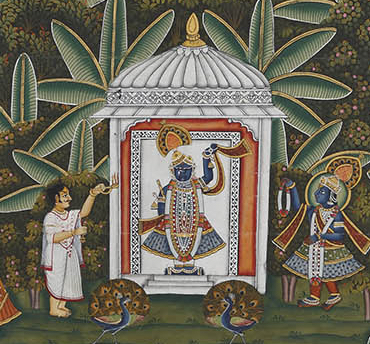It’s dusk sometime in the 1850s. Outside the city of Junagadh, a young boy clambers over a large rock and lies down. He’s been kicked out of home for doing poorly in school and spends the night out there, looking up at the stars. In the morning, he notices the rock he slept on is covered in an unintelligible writing. His curiosity sparks and lights the fuse to his innate passion for languages. The boy went on to become India’s first archeologist. And his bed that night was the famous Girnar Rock containing inscriptions dating back to the 3rdCentury BCE.
This vignette from the early life of Bhagwanlal Indraji—you can read more about him and his delightful biographer here—illustrates everything rewarding about studying history. The thrill of serendipity, the awakening of the imagination, the inevitability of being devoured heart and soul by a world you didn’t even know existed until this moment. In a way, being a student of history is like being an astronomer. Especially if the subject of study is an ancient or forgotten kingdom. In that case, the past is not just a foreign country—it may well be alien territory. The terrain is inaccessible, and the people all speak in tongues. The Brahmi inscriptions of Pali lines on the Girnar Rock were so removed from the daily life of a small-town Gujarati boy in 19th-century India, they may as well have been scrawled on the surface of the moon he’d spent the night under.
Language is one of the lenses through which we can peer knowledgably into the past. This is evident in our article on the 19th-century craze among British ‘orientalists’ to unearth mysteries about the Mauryan empire, so closely linked with the journey of Buddhism in the Subcontinent. Enthusiastic Company men had to learn new languages (by which we mean, old languages), get fluent in the different scripts they could be written in and do it all well enough to translate their findings into English so their peers could carry the baton forward. Polyglots had a distinct advantage in this area, as did adventurous army officers with a taste for shikar.
Another vital clue through which we may appreciate vanished kingdoms is architecture. Grand or humble, sturdy or esoteric, derivative or original, every piece of royal heritage reveals something about the secret desires of the powerful person who commissioned it. Did they want to be remembered as worldly sophisticates, earnestly devout or as architects of the future? The writing is, usually, on the wall.
Coins and maps give us insights into the political heart of the empires we seek to understand. Of a once powerful port on the Malabar coast that shipped luxury goods to ancient Rome nothing remains today but a point on a tattered map and some coins belonging to its rulers. Through these objects from our collection, we learn about the Cheras who controlled trade in the lost city of Muziris and the Kushans who were massively influential in the creating of the Silk Route.
As always with our Spotlight, we dive deep into the pockets of Indian history represented by the Sarmaya collection. With Age of the Empires, however, we have made a careful selection to bring you stories that are not often told (like that of the Pathan Sultanate) or present a perspective on history that is relevant to our world today (as in the ever-evolving research on Buddhism in India). We’ve purposely left out kingdoms we may have covered extensively in the past, like the Mughals or Mysore under Tipu, and tried to bring fresh light to dynasties that don’t feature so often in mainstream culture, like the stylish Sultans of Gujarat. We hope these stories will leave you feeling intrigued and wanting to know more about the glorious, ambitious, farsighted, but ultimately, fallible personalities who once ruled India. There’s still so much they have to tell us.



